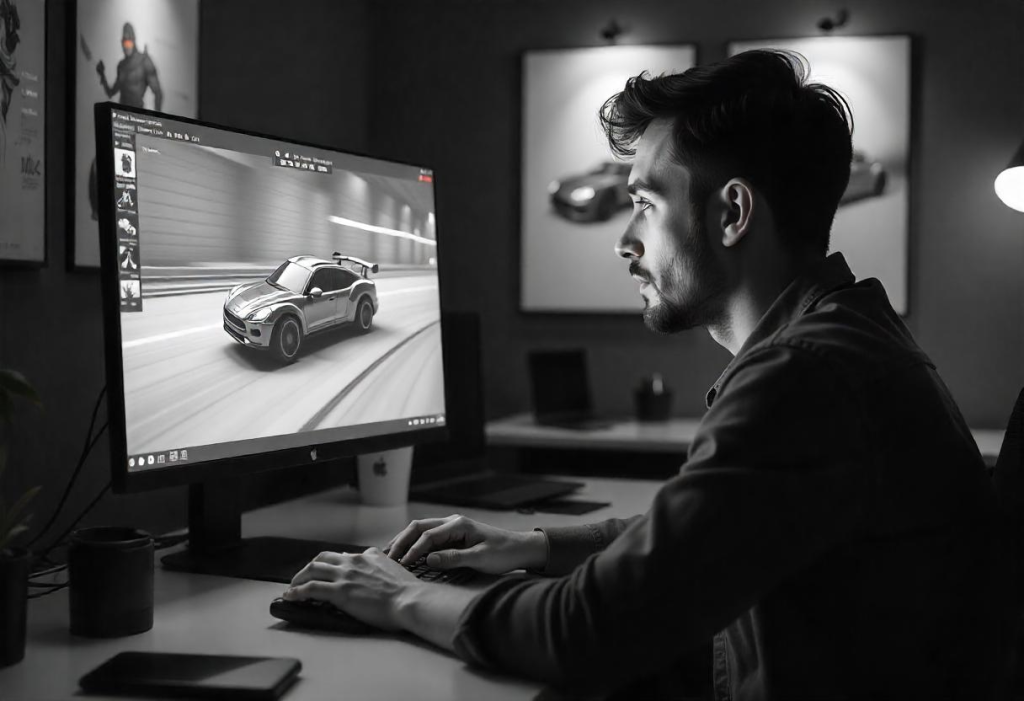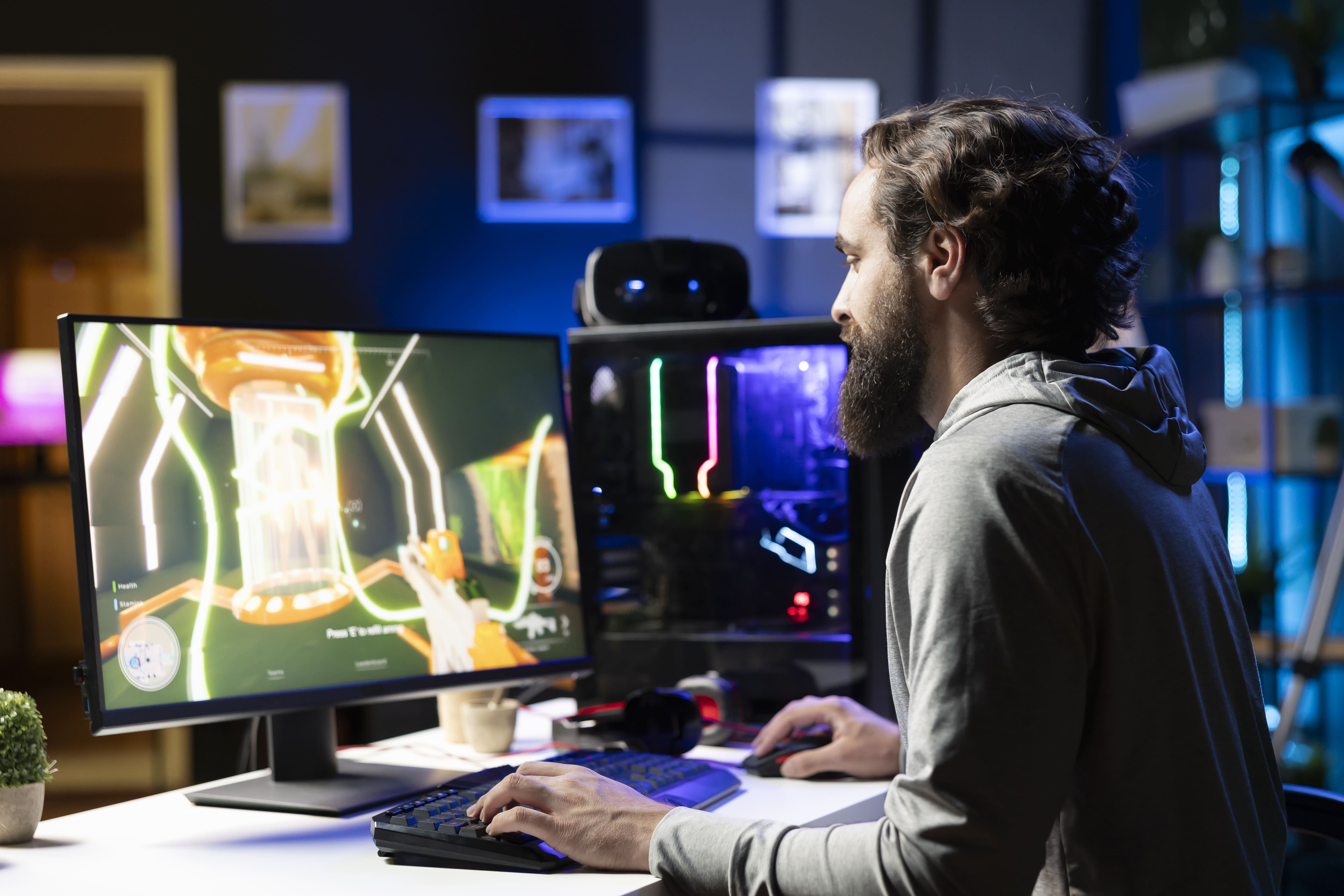The Role of Physics Simulations in 3D Gaming Animations
A car speeds through a virtual city and crashes into a lamppost. Sparks fly as the post topples to the ground. Nearby, a river flows with shimmering currents, rippling as a character wades through. Every movement, every reaction feels so real it’s easy to forget it’s all part of a game.
That’s the power of Physics Simulations—bringing nature’s law into virtual worlds to make them feel alive, as taught in the Animation Courses, such as B.Sc in Game Design and Development!
In this blog, we will explore their roles in 3D gaming, the benefits they bring, the challenges developers face, and the exciting trends shaping their future. Plus, we will also share how you can learn to create your own Physics-based Animations through Animation Courses.
What Are Physics Simulations in Gaming Animations?
Definition: Physics-based Animation is a method of creating movement by simulating real-world physical laws through specialized software called Physics Engines. Unlike traditional animation, which uses Keyframes or Motion Capture as predefined actions, this approach generates motion dynamically based on certain rules and parameters.
Do you want free career counseling?
Ignite Your Ambitions- Seize the Opportunity for a Free Career Counseling Session.
- 30+ Years in Education
- 250+ Faculties
- 30K+ Alumni Network
- 10th in World Ranking
- 1000+ Celebrity
- 120+ Countries Students Enrolled
Physics engines handle elements such as gravity, friction, elasticity, and collisions, allowing objects to interact naturally. This makes animations more realistic and adaptable, as they respond in real-time to the environment.
Example: Ragdoll Physics, where a character’s body realistically collapses and moves when hit or falling.
Benefits of Physics-Based Animations
Physics Simulations bring realism, creativity, and interactivity to 3D gaming by transforming virtual environments into dynamic, lifelike experiences. These benefits enhance player immersion and create more engaging gameplay instances.
Book Now →
1) Realistic Movements: Physics-based Animations can easily replicate real-world behaviours like gravity and collisions by moving characters and objects naturally.
2) Dynamic Environments: It enables destructible objects, fluid simulations, and realistic environmental interactions.
3) Enhanced Interactivity: Players can manipulate and influence the game world in unique and impactful ways.
Do you want free career counseling?
Ignite Your Ambitions- Seize the Opportunity for a Free Career Counseling Session.4) Improved Gameplay Variety: It encourages the creation of emergent scenarios, making each playthrough unique and unpredictable.
5) Increased Immersion: Natural physics responses make the world of gaming feel more alive and believable.
6) Replayability: Dynamic mechanics encourage players to revisit the game for new experiences.
7) Efficiency in Development: Physics engines automate complex calculations, enabling time and resource-saving for developers.
Read Also: Best Courses After 12th Arts – Top Career Options for Arts Students
Types of Physics Simulations in 3D Gaming
Physics Simulations in 3D Gaming are important for creating realistic interactions and virtual environmental movements. Here are the main physics Simulation types for adding depth and immersion to gameplay through real-life replication of real-life physics concepts.
1) Rigid Body Simulation: Rigid Body Simulation simulates the interactions and movements of solid objects that don’t deform. The key examples include bouncing balls and crashing cars, with realistic-like movements.
2) Soft Body Dynamics: Soft Body Dynamics focus on flexible objects that can bend or change shape, such as cloth, jelly, and rubber. This adds a realism layer to flexible materials and their interactions.
3) Fluid Dynamics: Fluid Dynamics handle the liquids and gaseous movement (unlike Soft Body Dynamics), such as water, smoke, or fire, to create visually stunning and lifelike gaming world effects.

Read Also: The Future of Animation & VFX : Trends to Watch in 2025
How To Create Physics Simulations For 3D Gaming?
Creating realistic computer graphical Physics Simulations requires the right sets of tools, a solid Physics understanding, attention to detail, and admission to the Animation Course. By combining observation, experimentation, and optimization, you can bring lifelike motion and interactions to virtual environments. Here’s a step-by-step how you can create Physics Simulations for 3D Gaming:
1) Choose the Right Software: Select the best software for your needs. For example, you can consider Blender, Maya, or Unreal Engine, taking into account key factors like compatibility, performance, and user-friendliness. Each tool has its own set of unique strengths. Taking the Blender example, it’s an open-source tool that is highly versatile. While Houdini offers advanced capabilities, it comes with a steeper learning curve.
2) Understanding Physics Fundamentals: A fundamental knowledge of Physics concepts and principles, such as gravity, force, momentum, and material behaviour, is essential. This knowledge helps you set accurate parameters and troubleshoot issues to make realistic simulations.
3) Use References and Observation: Study real-life behaviors through photos, videos, or direct observation. For example, watch how water flows or how objects collide and replicate these dynamics in your simulations to add authenticity and finer detail.
4) Experiment and Iterate: Test different settings, tweak parameters, and combine various simulation types (rigid body, soft body, fluids) to create complex and dynamic effects. Such experimental testing ensures the results meet your expectations accurately.
5) Optimize and Render: Lastly, simplify simulations by reducing geometry complexity, caching results, or lowering resolution to save computational resources. For this, you can use rendering techniques like lighting, motion blur, and shading to enhance the visual quality while ensuring the target platform’s efficiency.
Read Also: The Future of Game Design: Trends and Innovations for 2025
Challenges in Implementing Physics Simulations
From high computational demands to ensuring smooth multiplayer synchronization, developers face a few hurdles (although not severe) in implementing Physics Simulations. A few of these challenges include:
1) High Computational Demand: Real-time Physics Simulations are resource-intensive and require significant processing power, especially for complex or large-scale game environments.
2) Performance Balancing: Developers must strike a balance between realistic Physics and maintaining smooth, responsive gameplay to prevent any kind of lag or frame rate drops.
3) Multiplayer Network Synchronization: Ensuring that all multiplayer settings players experience the same physics interactions simultaneously is challenging due to differences in device processing speeds and network conditions.
4) Latency Issues: Network delays can cause inconsistencies in Physics Simulations. This can lead to disrupted gameplay and a less immersive playing experience.
5) Server Infrastructure Requirements: Real-time physics in shared environments, like the Metaverse, demands powerful servers to handle synchronisation and large volumes of data efficiently.
6) Complexity of Optimisation: Developers need to write optimized code to minimize resource usage while maintaining the physics simulations’ accuracy and simulation.
7) Scalability Concerns: Scaling real-time Physics for larger player bases or expansive game worlds without compromising performance remains a significant challenge.
Future Trends in Physics Simulations For Gaming
The Physics simulation’s future in gaming is set to transform how players interact with virtual worlds, pushing the boundaries of realism and immersion. Here’re the upcoming trends in the world of Physics Simulation for gaming:
1) Real-Time Fluid Simulations: Advanced fluid dynamics will deliver high-resolution, real-time effects for water, smoke, and other fluids for maximized visual fidelity.
2) Deep Learning in Physics Engines: Integrating Deep Learning will allow Physics systems to simulate player behavior, resulting in more adaptive and personalized interactions.
3) Enhanced Haptic Feedback: Improved tactile technology will provide players with physical sensations that align with in-game physics for enhanced immersion.
Read Also: How to Start a Career in Animation: A Step-by-Step Guide
4) Quantum Physics Simulations: Incorporating Quantum gaming principles could introduce innovative mechanics like uncertainty and entanglement, offering unique gameplay experiences.
5) Distributed Computing for Scalability: Distributed Physics Computing frameworks will enable the blending of expansive virtual worlds with complex physics interactions, handled efficiently across multiple devices.
How to Learn Physics-based Animation For Gaming?
Learning gaming physics-based animation opens up lucrative opportunities to create immersive, realistic virtual worlds. By combining practical experimentation with theoretical knowledge, community support, and Animation and VFX Courses after 12th, you can develop the valuable skills needed to excel in this field. Here’s a brief overview of these learning aspects:
1) Experiment and Practice: Perform hands-on experimentation with physics-based animation tools. It is one of the best ways to understand how they work and apply them to real-life 3D gaming projects.
2) Explore Learning Resources: Refer to resources such as books, articles, tutorials, and online Animation Courses After 12th to gain a solid theoretical understanding of the techniques behind Physics-based animation.
Read Also: Game Design and Development Course After 12th: Scope, Career, Fees
3) Join Communities and Forums: Engage with forums, communities, and online groups where you can interact with other learners and professionals, share ideas, and seek advice to enhance your skills.
Conclusion
Physics simulations have revolutionized the world of 3D gaming. With time, it is bringing realism, interactivity, and immersion to virtual worlds. From enhancing gameplay dynamics to shaping future trends, their impact is rapidly trending today. Moreover, as gaming evolves, mastering physics-based animation offers endless opportunities for animation aspirants to innovate and be creative.
By learning the tools, techniques, and principles behind these simulations, you can become a key player in molding the future of immersive gaming experiences. This journey begins with curiosity and commitment to perform better every day!
Take your passion further with an Animation Course in Delhi at AAFT (Asian Academy of Film and Television). With expert training and hands-on experience, AAFT helps you transform your Animation dreams into reality!

AAFT has been providing the world with limitless creativity and expression since 1993! Through a dynamic and industry-driven curriculum, AAFT provides engaging and captivating articles to persuasive blogs and empowers its readers to explore diverse avenues of creative media education-related content.






